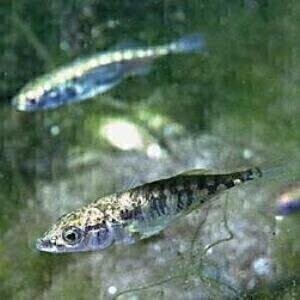Environmental Laboratory
What is the Environmental Impact of Slurry?
Dec 20 2022
With the recent release of the Environment Agency’s annual report, many outlets have been sifting through the various headline-making statistics and discussing the environmental impact that intensive farming, particularly livestock farms, might be having on British rivers. Of considerable interest is the problem of slurry run-off, around 300 incidents of which were recorded in the Agency’s report. For many, this has been a wake-up call and the specifics of the situation may have eluded these newly interested readers. It might worthwhile, then, to take a deeper dive into slurry, its dangers and environmental impacts.
First things first, then: what is slurry? Slurry is a mixture of water and manure used as a natural fertilizer for crops on farms throughout the world. While it can be an effective way to nourish and support the growth of crops, it also poses serious risks to the safety of those handling it and the environment.
One of the primary dangers of slurry is the release of gases during its bacterial decomposition. These gases are both colourless and odourless, making them even more dangerous to those who aren’t aware of the risks. One of the most dangerous gases released during this process is hydrogen sulphide, an extremely poisonous gas which can cause death in even the smallest of concentrations. If even one breath is taken of this gas when it is at high levels, it could cause instant death. In addition to hydrogen sulphide, slurry can also release methane, ammonia, and other harmful gases. Another risk that working with slurry poses is, quite shockingly, drowning. In certain scenarios, people have drowned in slurry tanks after being overcome by the gases and losing consciousness.
In addition to the risks to human health, slurry can also pollute the air and water. If slurry spills into the water, it can kill marine life and other wildlife, leading to environmental damage. These incidents are taken very seriously and can result in significant fines and penalties, including fines of up to £50,000 issued by the Environmental Agency (EA).
One of the primary causes of river pollution from slurry is the release of harmful chemicals and nutrients during its decomposition. When slurry decomposes, it releases nutrients such as nitrogen and phosphorus, which can cause excessive growth of algae and other aquatic plants in rivers and other bodies of water. This process, known as eutrophication, can lead to a reduction in oxygen levels in the water, causing harm to fish and other aquatic life. In addition to nutrients, slurry can also release chemicals such as heavy metals and antibiotics, which can have negative impacts on aquatic ecosystems. Heavy metals, such as zinc, copper, and lead, can be toxic to fish and other aquatic life, while antibiotics can contribute to the development of antibiotic-resistant bacteria in the water. Another factor contributing to river pollution from slurry is the risk of spills and accidents. If slurry is not stored and transported properly, it can leak or spill into rivers and other bodies of water, causing harm to aquatic life and the environment.
To minimize the risk of river pollution from slurry, it is important for farmers to store slurry in tanks or lagoons that are designed to prevent leaks and spills, and properly dispose of slurry to prevent it from entering bodies of water. Farmers can also use best management practices, such as incorporating slurry into the soil or using it as a fertilizer in a controlled manner to minimize the risk of nutrient runoff. The latter might include only spreading slurry at the permitted time of year, keeping children and animals away from the mixture, having multiple people present at all times, mixing on windy days, and ensuring good ventilation in the mixing area.
So, while slurry is a highly valuable tool for fertilizing crops (especially in the context of stratospheric prices for synthetic fertiliser), it also poses serious risks to human health and the environment. By following proper safety procedures and obtaining the appropriate insurance, farmers can minimize these risks and protect themselves from liability claims.
Digital Edition
AET 28.2 April/May 2024
May 2024
Business News - Teledyne Marine expands with the acquisition of Valeport - Signal partners with gas analysis experts in Korea Air Monitoring - Continuous Fine Particulate Emission Monitor...
View all digital editions
Events
Jul 30 2024 Jakarta, Indonesia
China Energy Summit & Exhibition
Jul 31 2024 Beijing, China
2024 Beijing International Coal & Mining Exhibition
Aug 07 2024 Beijing, China
IWA World Water Congress & Exhibition
Aug 11 2024 Toronto, Canada
Aug 25 2024 Stockholm, Sweden and online









.jpg)








